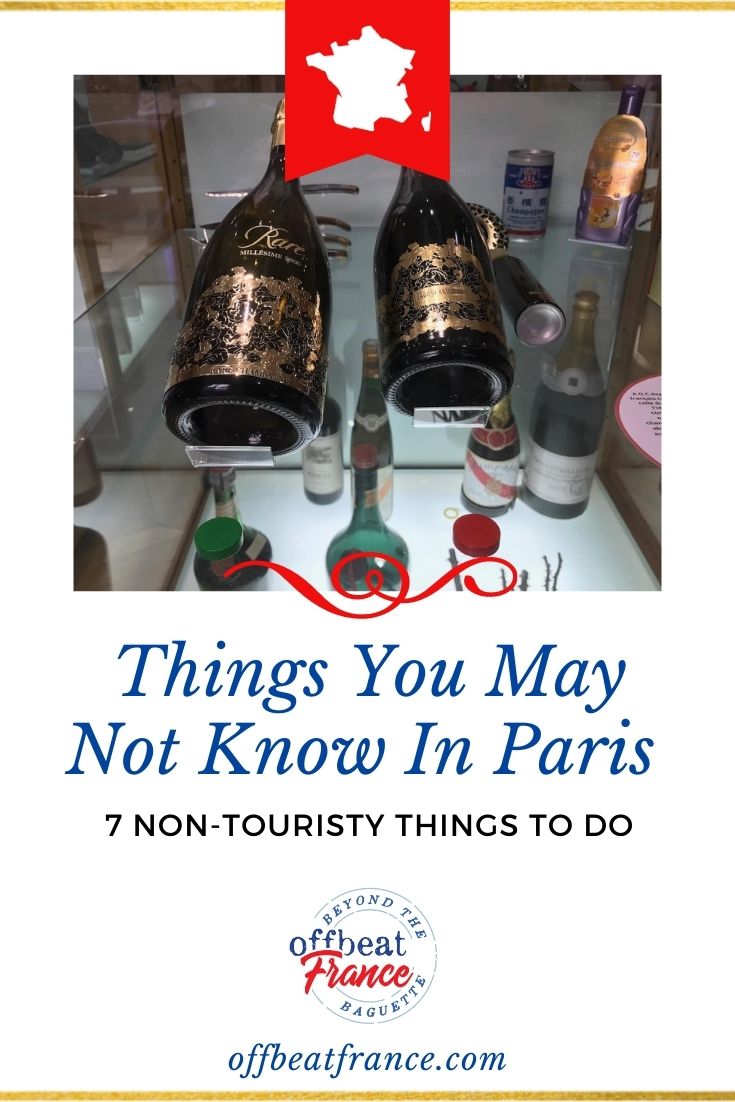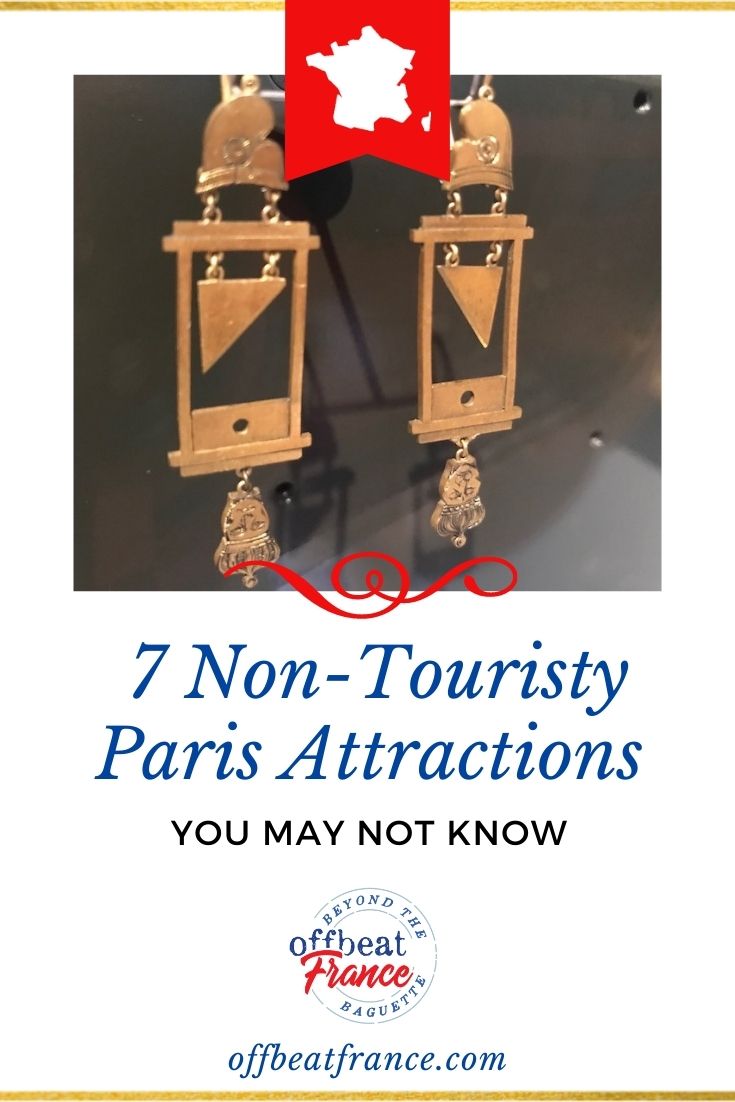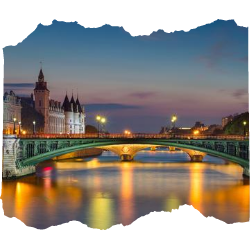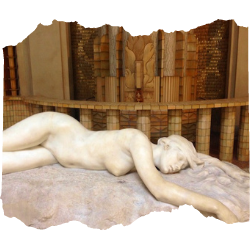Unsure about your French table manners? Click Here to download > > How to avoid these 10 food etiquette mistakes !
- Home ›
- Destinations ›
- Paris ›
- 7 Less Touristy Things to Do in Paris
7 non-touristy things to do in paris
Published 07 November 2021 by Leyla Alyanak — Parisian by birth, Lyonnaise by adoption, historian by passion
Each time I visit Paris (at least twice a year) I tend to return to places I love. This time, I decided to seek out more offbeat sights, and enjoyed these 7 non-touristy things to do in Paris.
Are you looking for something different do in Paris? Things that might raise an eyebrow, or surprise even a jaded francophile?
It's hard to go off the beaten path in Paris because everything has been seen, experienced, catalogued.
Perhaps. But have YOU seen and done it all? Maybe not.
To give you a chance to catch up, here are some unique things to do in Paris that might be new to you. Even if you've heard of a few of them, if you discover even a single new exciting activity, I'll feel I've accomplished my mission.
NOTE: Pages on this site may contain affiliate links, which support this site. See full Privacy Policy here.
7 Fun non-touristy things to do in Paris
1. Take the Wallace Fountains challenge
2. Catch your breath at the best Paris skyline views
3. Experience the Belle Epoque in a Paris bouillon
4. Chase the Space Invader in the Marais
5. Penetrate the silence of the haunted catacombs
1. Take the Wallace Fountains challenge
Do you like games or challenges?
If not, skip right past to #2. But if you do, then you're in for a treat.
You know the Wallace fountains, right? Those lovely green bronze fountains you've probably crossed a dozen times in Paris?
If it's a sunny day and you're not up to elbowing the crowds at the Eiffel Tower or the Louvre, this is a fun Paris family vacation outing or a great thing to do in Paris with kids. (From personal experience, I can say this is also great fun if you're in Paris solo.)
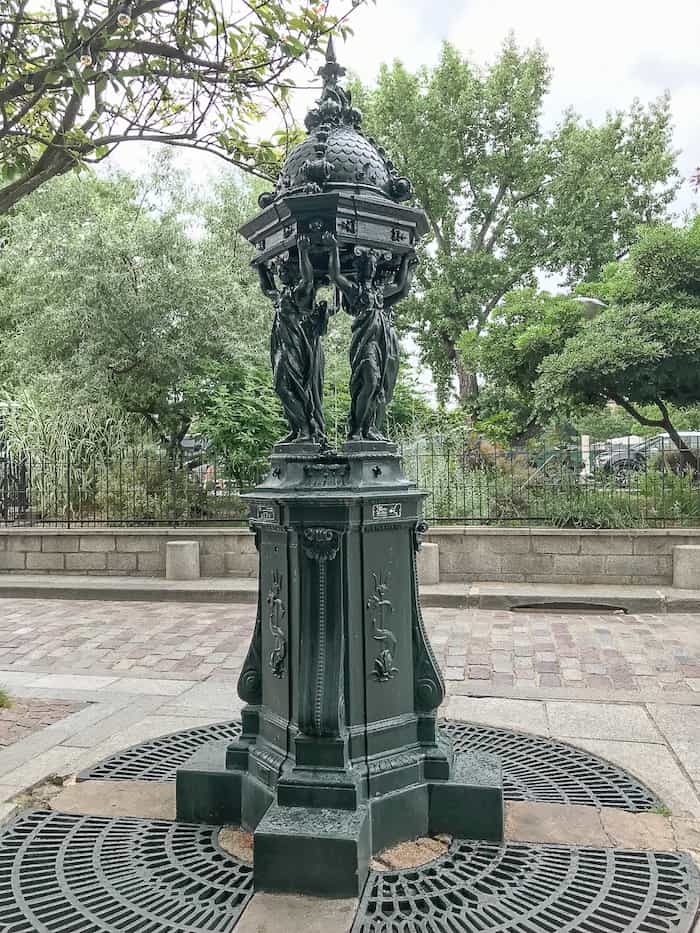 Chasing the Wallace fountains, an off the beaten path Paris activity
Chasing the Wallace fountains, an off the beaten path Paris activityBut first, a bit of credit where it is due.
Back towards the end of the 19th century, in those turbulent times after the Franco-Prussian War and the Paris Commune, Paris was getting a makeover. It was an era of "good works" and a certain Richard Wallace, a Briton living in Paris, decided to use his handsome inheritance to provide the city with clean drinking water. Much of the water supply had been destroyed by the recent violence, and "clean" water (often straight from the Seine River) was expensive, a hardship for the poor.
By building the fountains (sculpted by Charles-Auguste Lebourg), Wallace ensured a clean drinking supply for Parisians, not to mention beautiful works of art throughout the city.
Here are a few things you should know before we begin our quest:
- Paris has 104 Wallace fountains
- They come in four different sizes and shapes
- Several cities across France have them, the greatest number being in Bordeaux and Nantes
- Several dozen are located outside France, on every continent but Oceania
Ready to explore the fountains? You can do it in two ways: 1) Download the list and find each fountain, check it off the list and send in your list for some official recognition, or 2) Take one of the 21 guided walks to explore different parts of Paris and find the fountains in each area.

2. Catch your breath at the best Paris skyline views
Let's face it, looking over the rooftops searching for a glorious view isn't exactly one of the more unusual things to do in Paris – it's something every single one of us has (probably) tried to do.
Of course you can get magnificent Paris views from the top of the Eiffel Tower, but isn't it better to actually SEE the tower? And yes, there's always the top of the Tour Montparnasse, which you can combine with a Seine River cruise.
Instead, head for the Galeries Lafayette. That's right, the legendary department store on the Boulevard Haussmann. Go up to the 8th floor terrace for an extraordinary view over Paris rooftops. Don't take the elevator though, because the interior cupola of the store is every bit at beautiful as the view beyond.
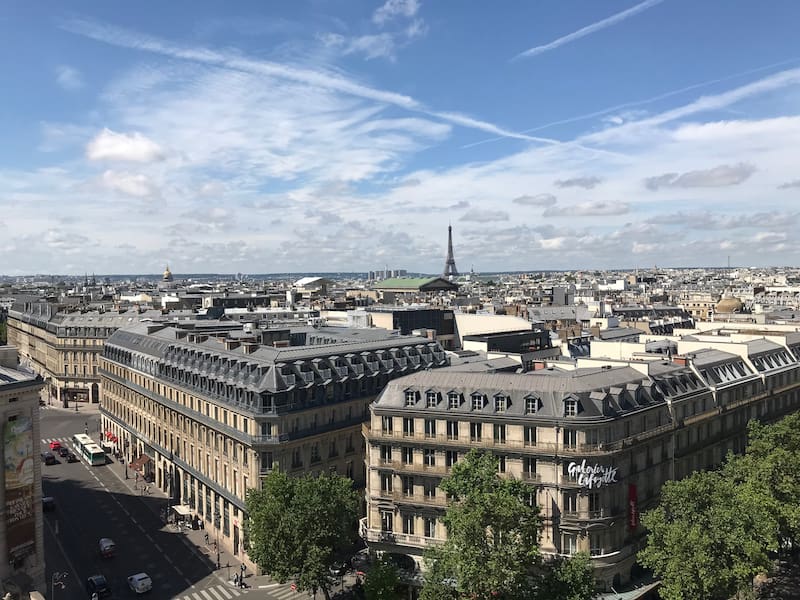
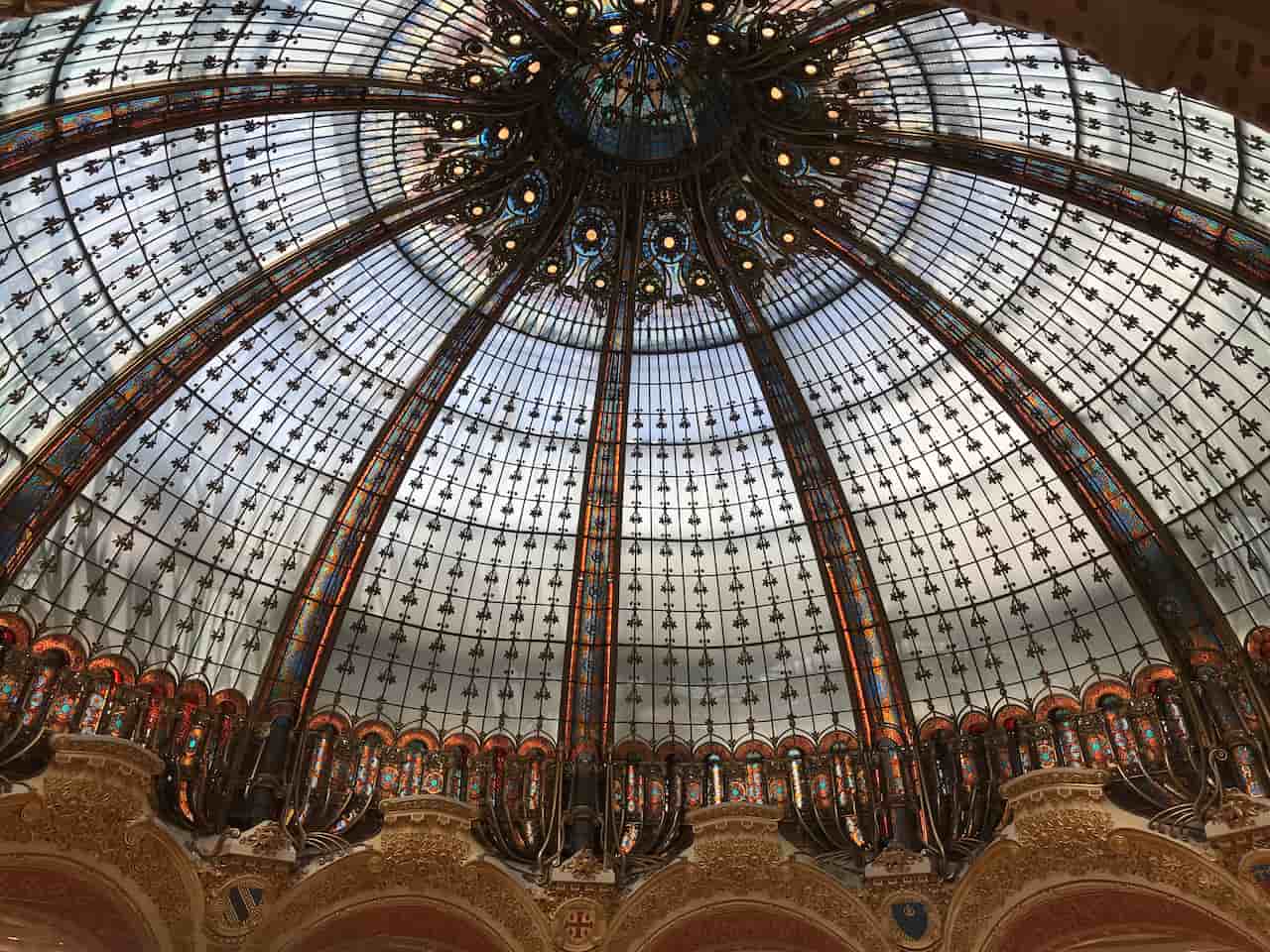

3. Experience the Belle Epoque in a Paris bouillon
All sorts of restaurants beckon to tourists in Paris − it's hard to choose where to eat, unless you have your heart set on a certain starred establishment or a recommendation from someone you trust.
How do you battle your way through the bistrots, brasseries, cafés, restaurants, patisseries, salons de thé and other eateries that bombard you with their deliciousness?
Here's one way: choose the history, décor, and price trifecta.
One of the unique things to do in Paris is to bundle all three for an unforgettable experience. Head for one of the unique bouillons of Paris, the Belle Époque eateries that were popular in the late 19th century when Parisian workers had to be fed cheaply. While most have disappeared, a few remain, and others are making a comeback, by advertising traditional old-fashioned dishes at traditional, old-fashioned prices.
Some may be modern, but a few look as exquisite today as they did more than a century ago when the Belle Époque was in full swing.
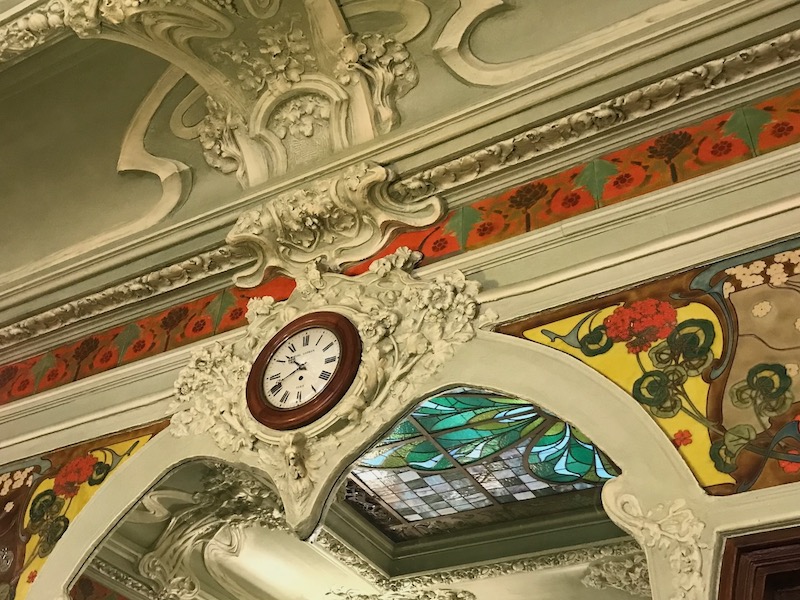

4. Chase the Space Invader in the Marais
And now, time for another game and challenge. Again, if you don't like these, the same rules apply as did for the fountains: skip straight to the next section!
But if you like hunting for things and happen to be a street art fan, this one is definitely for you.
An urban street artist known as Invader is leaving his mark throughout the Marais neighbourhood, usually above eye level, so you have to be attentive.
Or at least, that's where his work is concentrated, because he has radiated throughout Paris, and then the world. Today, his tiny mosaics can be found in several dozen countries, and the list keeps growing.
It's become a game, played in great part in France, but not only.
If you want to chase down Invader art, here's what you do: download the app (for Android or iPhone), and each time you spot an Invader original (or one you think might be an original, because there are plenty of imitations), take a photo with the app. It will tell you whether it's real and if it is, it adds it to your score. There's an entire community out there playing this game! (Yours truly included, but without much success.)
And here's where it gets interesting: it is rumoured that the first person to find ALL the Space Invaders will receive a major treasure from the artist... problem is, no one knows how much, or whether this is true, or how many pieces of art there are. But there are those who don't care about the prize – they just want to play.
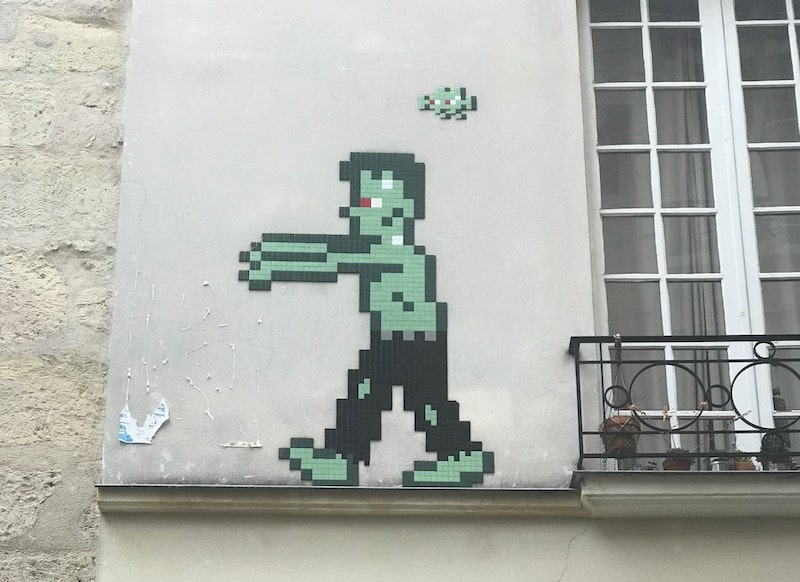
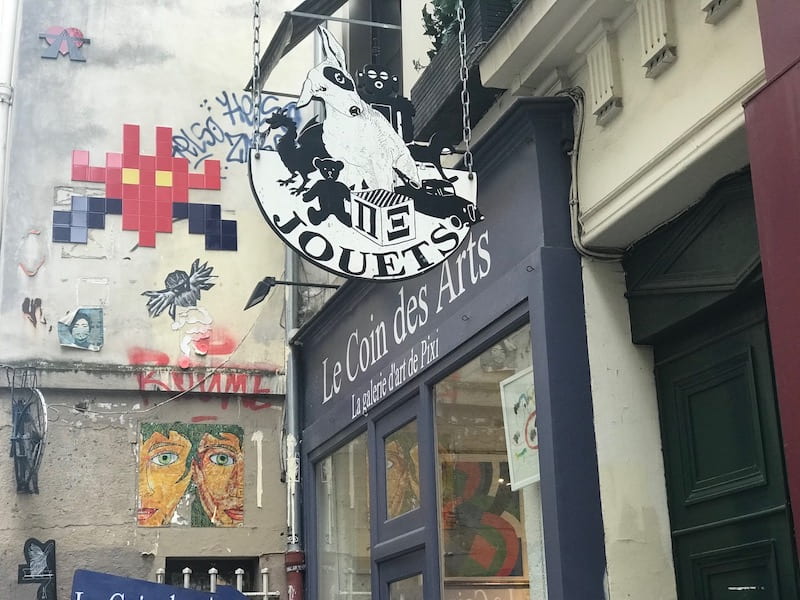

5. Penetrate the silence of the haunted Catacombs
It's probably wrong to list this as one of the non touristy things to do in Paris, because of course, tourists do visit (in fact, I don't think there's a corner of Paris that remains unexplored).
But this former quarry located beneath the streets of Paris is so unusual that a trip down into the darkness of the Paris Catacombs will leave you feeling slightly "other-worldly": it's considered one of the most haunted places in Paris.
The Catacombs are a giant ossuary and contain the bones of six million Parisians. But it wasn't always this way. These were limestone quarries in Roman times, although back then they were still open-pit mines, becoming tunnels as Paris spread and covered them.
By the 19th century, the quarries were no longer exploited and authorities decided they'd found the perfect solution to the capital's overflowing public cemeteries: they would transfer the bones to the former quarries.
This underground warren is huge, criss-crossing along hundreds of kilometers beneath the streets of Paris, but the section you can actually visit is only 1.7km long – but it still takes the better part of an hour. A guided tour of the Catacombs will help explain everything you're seeing.
The fact that the bones are here is unusual enough, but what is really striking is how they are displayed.
You might expect them to be respectfully stacked but no, they are shaped into structures that can be geometric or whimsical, arranged "artistically" to be pleasing to the 19th-century eye.
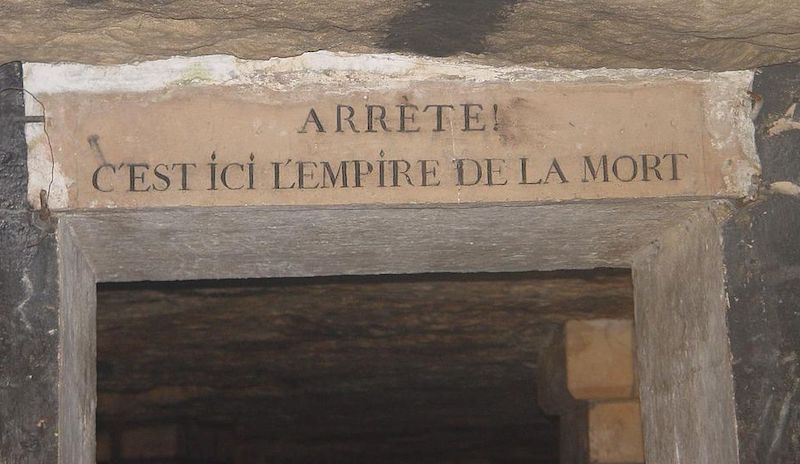

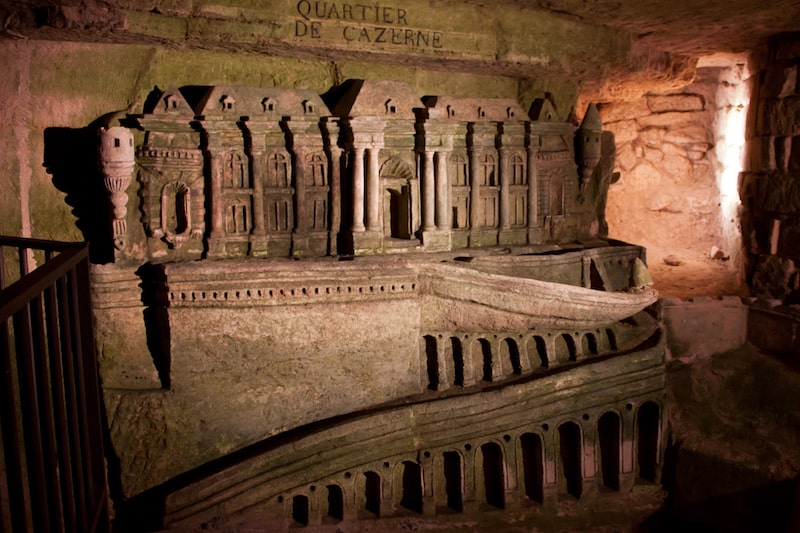 From top to bottom: entranceway to the ossuary; bones positioned in the shape of a barrel; a carving by a quarry worker.
From top to bottom: entranceway to the ossuary; bones positioned in the shape of a barrel; a carving by a quarry worker.
6. Ride the city's secret tourist bus routes
Did you know you could ride city buses to see most of the main (and offbeat) Paris attractions at a fraction of the cost of a tourist bus? Doing this is without a doubt one of the best non touristy things to do in Paris, and it's one of my best travel tips.
Most of us are busy scurrying about in the Métro and taking the bus isn't a favourite − you get caught up in traffic, they don't always come on time, so why bother?
Because they give you a view of Paris you won't get another way, that's why.
As of this writing, a one-day Paris bus ticket costs €12 and for that price, you can ride the buses all day. If you think this might not sound overly exciting, you'd be missing the point. Consider these bus lines and where they stop:
There are plenty of passes that include public transportation and although these are useful, if you're in Paris long enough, use the public bus system for the first day and get your bearings. You can splurge for the more expensive options later.
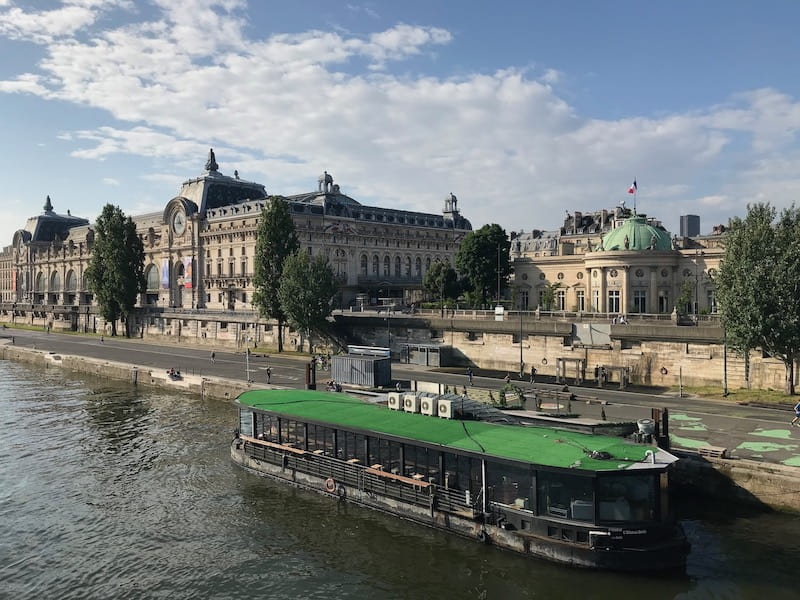
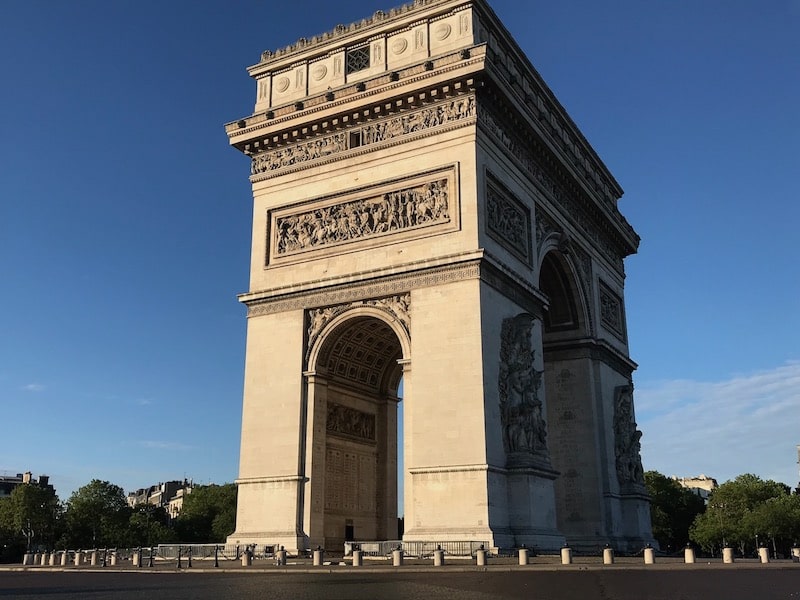
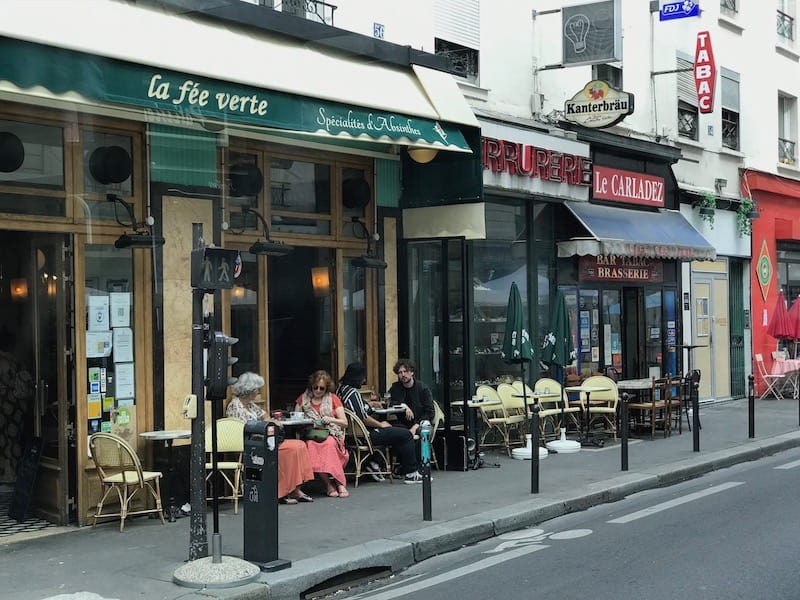
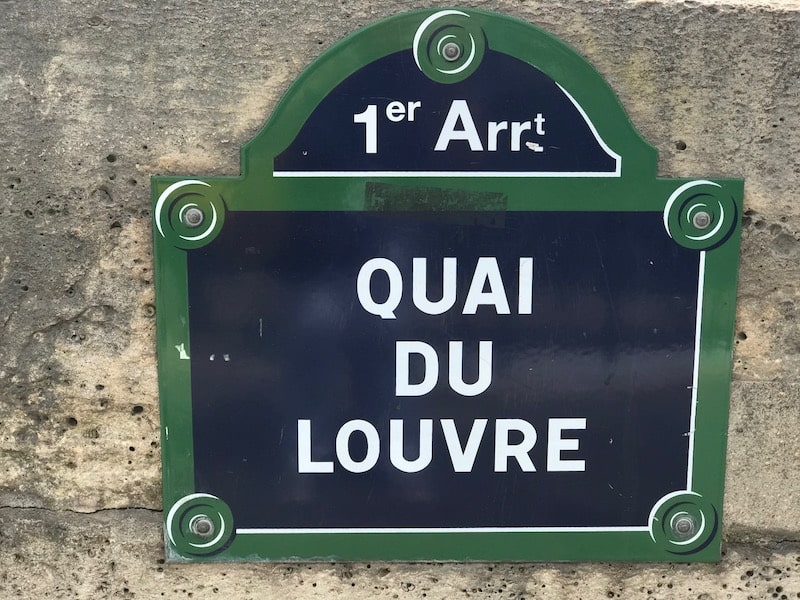 From the top, some of the places you'll see on your bus rides: the Musée d'Orsay, Arc de Triomphe, a random street on the way to the Père Lachaise Cemetery, and a Paris street sigh.
From the top, some of the places you'll see on your bus rides: the Musée d'Orsay, Arc de Triomphe, a random street on the way to the Père Lachaise Cemetery, and a Paris street sigh.Here are a few examples of the best lines, and some of the best stops along these lines, but there are many more.
- Bus 22: the Arc de Triomphe and the Opéra Garnier
- Bus 24: the Louvre, Pont-Neuf, Notre-Dame, Ile St-Louis, Musée d'Orsay
- Bus 69: this one is nicknamed the "Grand Tour" and includes everything from the Père Lachaise to the Bastille and the Louvre (including a view of the Eiffel Tower)
- Bus 72: straight down the Right Bank
- Bus 80: an even better view of the Eiffel Tower; take it from the Sacré-Coeur and head for the Champs Elysées
- Bus 89: takes you through the Latin Quarter and the Pantheon, the Luxemburg Gardens and the Jardin des Plantes
- Bus 95: flea markets!
For details of all the routes, visit the RATP official Paris public transport website. I highly recommend you download their app – it's one of the really good public transport apps out there.
And if you do buy that one-day ticket, please sign it right away and keep it safe (I managed to lose mine within minutes of buying it, and had to buy a second one – they're tiny little tickets).

7. Discover fascinating niche museums
I love the Louvre and the Musée d'Orsay and all the wonderful art collections I'm embraced with whenever I visit Paris. But each time I go, I also like to explore something that doesn't end up on the top 10 museums list.
On my last visit, I went to three separate museums. They may not really qualify as offbeat, but they're not in the line of fire, either.
Museum of Counterfeit Goods
This tiny local museum in the 16th arrondissement showcases Paris off the beaten path at its best, and is probably the most unusual of the three I'm highlighting here.
Established by Unifab, the French manufacturers' association, the Museum of Counterfeiting traces the path of counterfeit goods in France, from origin to sale and everything in-between. Its displays contain both fake and real products, some so similar that it's no wonder we get confused.
It's a huge trade worth billions, which accounts for the huge fines that can be levied against both counterfeiters and people who knowingly or unknowingly buy fake goods.
You'll be surprised at the kinds of things people try to pass off as original, and while some may be whimsical, like fake ketchup (I mean, why??) others can be life-threatening, like fake drugs or car parts.

Musée des Arts et Métiers
In an uncharacteristic lapse of research, I somehow expected this museum to be about traditional arts and crafts.
So imagine my surprise when I found myself in an industrial training center filled with furnaces, robots and telescopes! This science and technology museum is full of surprises – a vintage aircraft hung from the ceiling of a former church?
This fascinating space also happens to be France's oldest science museum, founded in 1794 to store and protect scientific instruments and inventions of the day.
A few hours spent here will be a marvel for those of us who like to know how things came about and how things work. Sadly, though, the original model of the Statue of Liberty that was once in the courtyard is gone, shipped to the US by France as a gesture of goodwill. (Don't despair though, you will see another statue inside, however.)
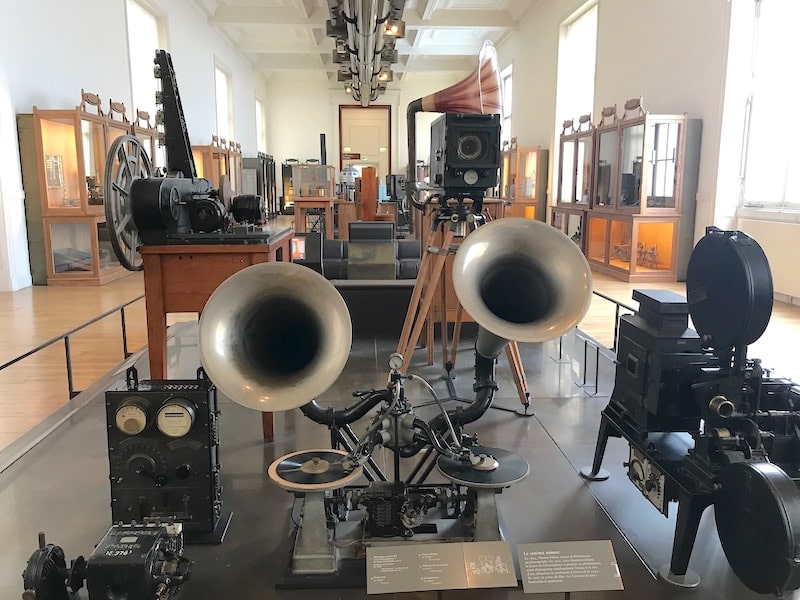
Musée Carnavalet
This is the final and least offbeat of the three museums but it's one of the city's hidden gems. I've included it 1) because quite a few visitors to Paris bypass it and 2) it was shut for renovations for five years so there's every chance you haven't seen its new incarnation yet. This is the museum you visit if you want to know more about the history of Paris, although only some of the displays have explanations in English, but if you already know some of the history, many of the exhibits will be self-explanatory.
A word of warning: the exhibits change often! I visited twice with a six-month gap and the guillotine earrings that had so caught my eye were gone, but an incredible Art Nouveau furniture display had magically appeared.
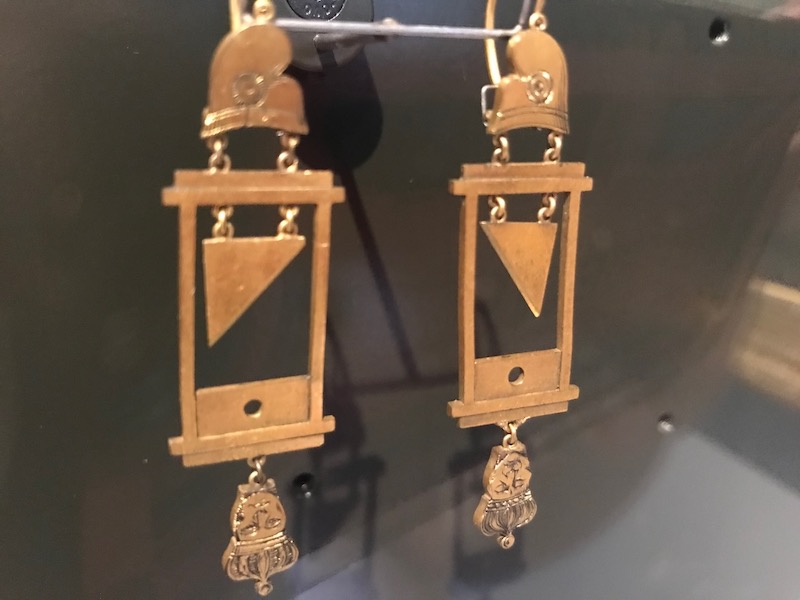 These are the famous guillotine earrings. The photo is blurred so I returned to the Carnavalet specifically to redo this photograph...
These are the famous guillotine earrings. The photo is blurred so I returned to the Carnavalet specifically to redo this photograph...The Carnavalet is conveniently divided into periods, so if you want to explore the end of the monarchy or the Belle Époque, just head to those rooms. The museum's setup is utterly confusing, so planning is either essential or useless. I spent half my time looking for an exit, but my walks took me past plenty of delights I would never have seen otherwise...
Whether it's an offbeat museum, a game or challenge, or simply riding the bus, there's plenty you haven't seen in Paris yet, don't you think?
Did you enjoy this article? I'd love if you shared it!
You might also like these stories!
Pin these and save for later!
